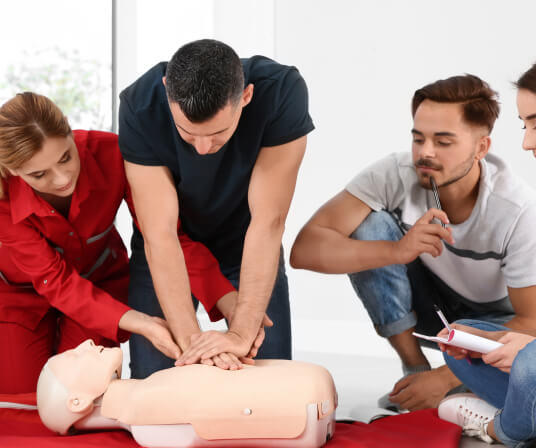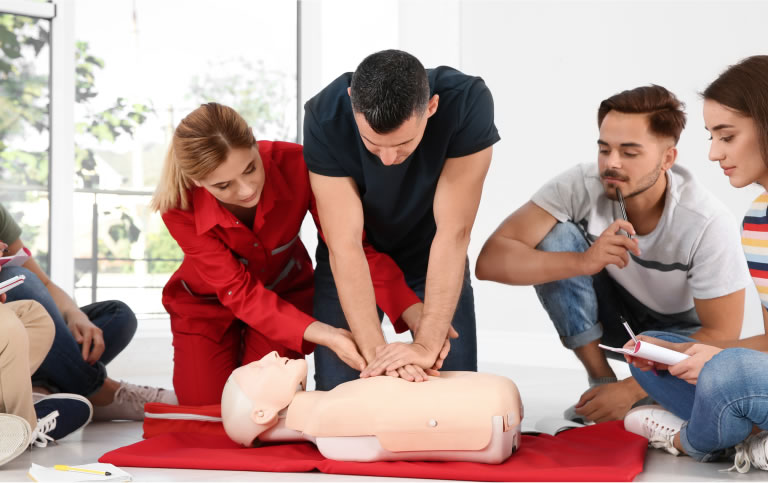Menu
Menu
CPR, First Aid, BLS, ACLS, PALS certifications.



$49.95 $59.85
| Chapters | CE Credits | Validity | Cost | Duration | ECC | Exam Attempts | Wallet Card |
|---|---|---|---|---|---|---|---|
| 31 | — | 2 Years | $49.95 | 2 Hrs | Compliant | Unlimited | Download/Print/Mail |
It is important to always check the scene and ensure your safety first. Remember to stay alert so you are able to identify and assist in an emergency.
2020 Interim Guidance for suspected or confirmed COVID-19 patients: Put on PPE immediately & limit the personnel around you after you verify that the scene is safe.
It is critical to understand that dialing 9-1-1 is one of the most important steps you can take to save another’s life.

